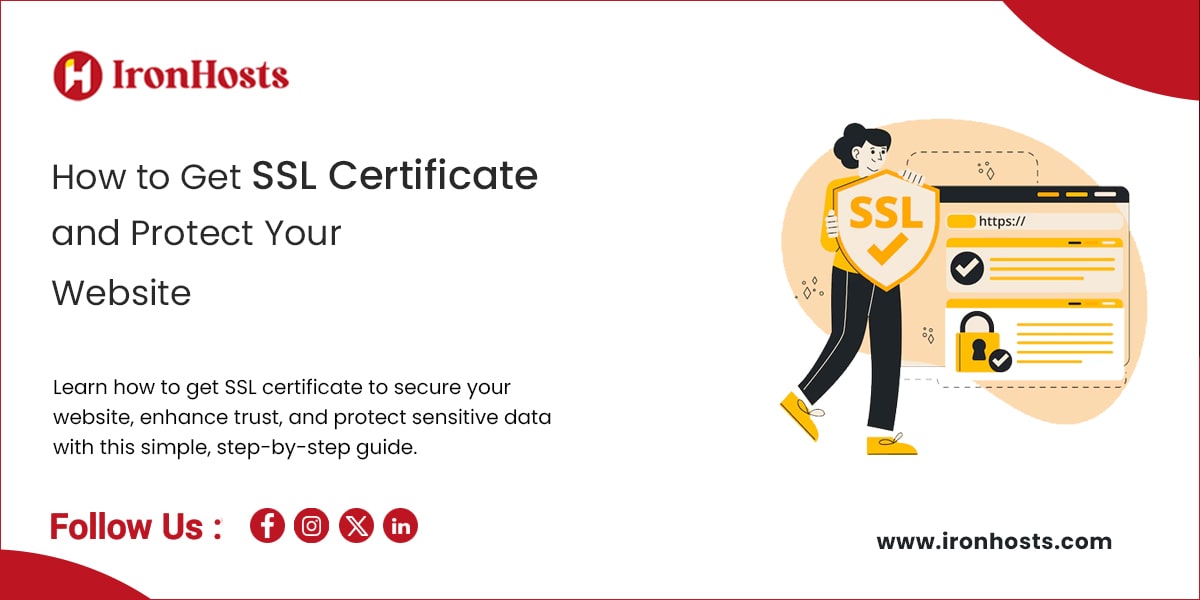What is an SSL Certificate?
An SSL (Secure Sockets Layer) certificate is a security protocol that encrypts the data exchanged between a website and its users. It ensures that sensitive information, such as login credentials, credit card details, and personal data, is securely transmitted over the internet. Websites with an SSL certificate display “HTTPS” in their URL and often show a padlock icon in the browser’s address bar, signaling to users that their connection is secure and trustworthy.
Why Do You Need an SSL Certificate?
SSL certificates offer several critical benefits to both website owners and users:
1. Secure Data Transmission
The most obvious reason to get an SSL certificate is to protect sensitive information exchanged on your website. Whether your users are submitting credit card details or simply logging in, an SSL certificate ensures that this data is encrypted and safe from hackers.
2. Improve Trust and Credibility
A website with an SSL certificate enhances its credibility. Visitors are more likely to trust a website with the padlock symbol in the address bar. Many web browsers now display warnings on websites without SSL, which could drive potential customers away.
3. SEO Benefits
Google has confirmed that SSL certificates are a ranking factor. Websites with SSL certificates are favored in search engine results, which can help improve your visibility and increase traffic.
4. PCI Compliance
If your website handles credit card payments, you need to comply with the Payment Card Industry Data Security Standard (PCI DSS). Installing an ssl certificate is one of the basic requirements for PCI compliance.
How to Get an SSL Certificate
Step 1: Choose the Right SSL Type
There are several types of SSL , and selecting the right one depends on the size and needs of your website:
1. Domain Validation (DV) SSL
This is the most basic and affordable option. DV certificates only verify that you own the domain. This type is suitable for blogs or small personal websites.
2. Organization Validation (OV) SSLOV certificates are more advanced and require proof of your organization’s identity. They are typically used by businesses that want to increase their customers’ trust.
3. Extended Validation (EV) SSL
EV certificates provide the highest level of encryption and require a more thorough vetting process. Websites with EV certificates display a green address bar in the browser, providing maximum trust for users. These are commonly used by financial institutions and large enterprises.
Step 2: Choose a Certificate Authority (CA)
A Certificate Authority (CA) is a trusted organization that issues SSL certificates. Popular CAs include:
- Let’s Encrypt (free, widely used)
- Comodo (affordable options)
- DigiCert (premium certificates)
- GoDaddy (known for its reliability)
Select a CA based on your budget, the level of validation you need, and the reputation of the CA.
Step 3: Generate a CSR (Certificate Signing Request)
A CSR is a block of encrypted text generated by your hosting provider. It contains information about your domain and public key, which is necessary for creating your SSL certificate. Here’s how you can generate a CSR:
- Log in to your hosting provider’s control panel.
- Locate the SSL or Security section.
- Generate a CSR by providing details such as your domain name, organization, and contact information.
- Copy the generated CSR and submit it to your chosen CA.
Step 4: Complete Domain Ownership Verification
Once you submit the CSR, the CA will verify your ownership of the domain. Depending on the type of SSL certificate, the verification process may involve:
- Email verification: The CA sends a confirmation email to an admin email address associated with your domain (like admin@yourdomain.com).
- File verification: The CA may ask you to upload a specific file to your website to prove ownership.
Step 5: Install the SSL
Once your SSL is issued, you’ll need to install it on your web server. The installation process varies depending on your web hosting provider and server type, but generally, the steps are:
- Download the SSL from your CA.
- Log into your hosting control panel.
- Locate the SSL or Security section.
- Upload the certificate and any intermediate certificates provided by the CA.
- Save the changes and ensure that the SSL certificate is activated.
Step 6: Update Your Website to Use HTTPS
After installing the SSL certificate, it’s time to make sure your website uses HTTPS instead of HTTP. Here’s how:
- Redirect HTTP to HTTPS: Set up 301 redirects to automatically send visitors from the non-secure HTTP version to the secure HTTPS version.
- Update Internal Links: Make sure all internal links, images, and scripts on your website use HTTPS URLs.
- Update Google Search Console: If you’re using Google Search Console, update your website’s URL to the HTTPS version.
- Test Your SSL Certificate: Use an SSL checker tool to ensure everything is working correctly.
Conclusion
Getting an SSL for your website is an essential step toward securing your site and protecting your users. By following the steps outlined above, you can easily obtain and install an SSL certificate that will enhance your website’s security, improve your credibility, and give you a competitive edge in search rankings. Don’t wait—make the switch to HTTPS today and ensure that your website is safe and trusted by visitors.

